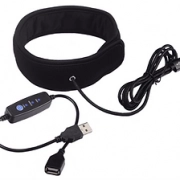How-to: Capture Enchanting December
December. The month of the year blazes with colorful lights as the length of daylight approaches its shortest duration. A perfect time to experiment with camera settings and get creative with your photography! You can take advantage of colorful lights close to home, visit the light displays in the city, visit places like La Salette Shrine or Tower Hill Botanical Garden that decorate their gardens with extensive lighting. Experiment with shooting in different places! If we get lucky, a layer of snow adds a glistening, reflective dimension to the color. Incorporate reflections, be it water, glass, or even ice!

📷 – Nikon D810 🔘 – Nikon 28-300mm 🎞 – ISO 100 🔘 – f/8 🕒 – 5 seconds
In my film days, I often used a “star filter” which created starbursts on lights without stopping down the aperture. I still lean on filters since they afford creativity that you can experiment with while you are shooting. Sure, there are star filters you can apply during post-processing, but there is substantial satisfaction getting it done in-camera. My filters from film days are still in my toolbox of gadgets when I shoot. Luckily, star filters are still available in various sizes and are very inexpensive. A set of 3 filters which include 4-, 6-, and 8-point filters costs under $30. No, you don’t need expensive filters for this. As long as they are optical glass, they are more than satisfactory for the task. These also work great on water reflections.
Experiment.
· Start at ISO 100, widest aperture.
· Increase the aperture.
· Decrease shutter speed.
· Increase shutter speed.
· Try different filter combinations.
· See what is pleasing to your eye.
You are the artist; your camera is your paintbrush. Try different things. Shoot wide open (at the widest aperture) and see how the bokeh looks combined with star points.
Bokeh is beautiful..

📷 – Nikon D780 🔘 – Nikon 28-300mm 🎞 – ISO 100 🔘 – f/5.6 🕒 – .6 seconds
Practice intentional camera movement (ICM). Use a slow shutter speed and zoom in, zoom out. Turn the camera while you zoom (keep lens fixed but turn the camera body) and see what magic happens. If your camera has the ability, try in-camera multiple exposures. If it doesn’t, stack individual images in post. See what happens when you do ICM with the filters on, then off. Your camera is registering light, so you never know how the ICM paints the light on the sensor. You can do this on a tripod or handheld – I’d recommend shooting both ways. As always, keep an eye on the histogram and shoot at low ISO. Learn more about ICM.

📷 – Nikon D810 🔘 – Nikon 28-300mm 🎞 – ISO 100 🔘 – f/3.5 🕒 – 1.3 seconds
Imagine your shot. Plan it and click away! Don’t forget, sometimes the shot you didn’t plan is the best surprise. The image below became my Christmas card one year.

📷 – Nikon D810 🔘 – Nikon 28-300mm 🎞 – ISO 100 🔘 – f/6.3 🕒 – 6 seconds

📷 – Nikon D780 🔘 – Nikon 28-300mm 🎞 – ISO 100 🔘 – f/5.6 🕒 – 1.3 seconds
Do you use creative filters on your lenses? Do you use special techniques with filters you like to use? I’d love to hear them! Comment below or email.
© Silvana Della Camera
To learn about upcoming workshops and tips on photography, consider subscribing to my website.
Taking photos and want to make them more compelling?
Art isn’t just for walls. Art is also to hold in one’s hands.



 Silvana Della Camera
Silvana Della Camera


 Silvana Della Camera
Silvana Della Camera Silvana Della Camera
Silvana Della Camera Silvana Della Camera
Silvana Della Camera Silvana Della Camera
Silvana Della Camera
Leave a Reply
Want to join the discussion?Feel free to contribute!